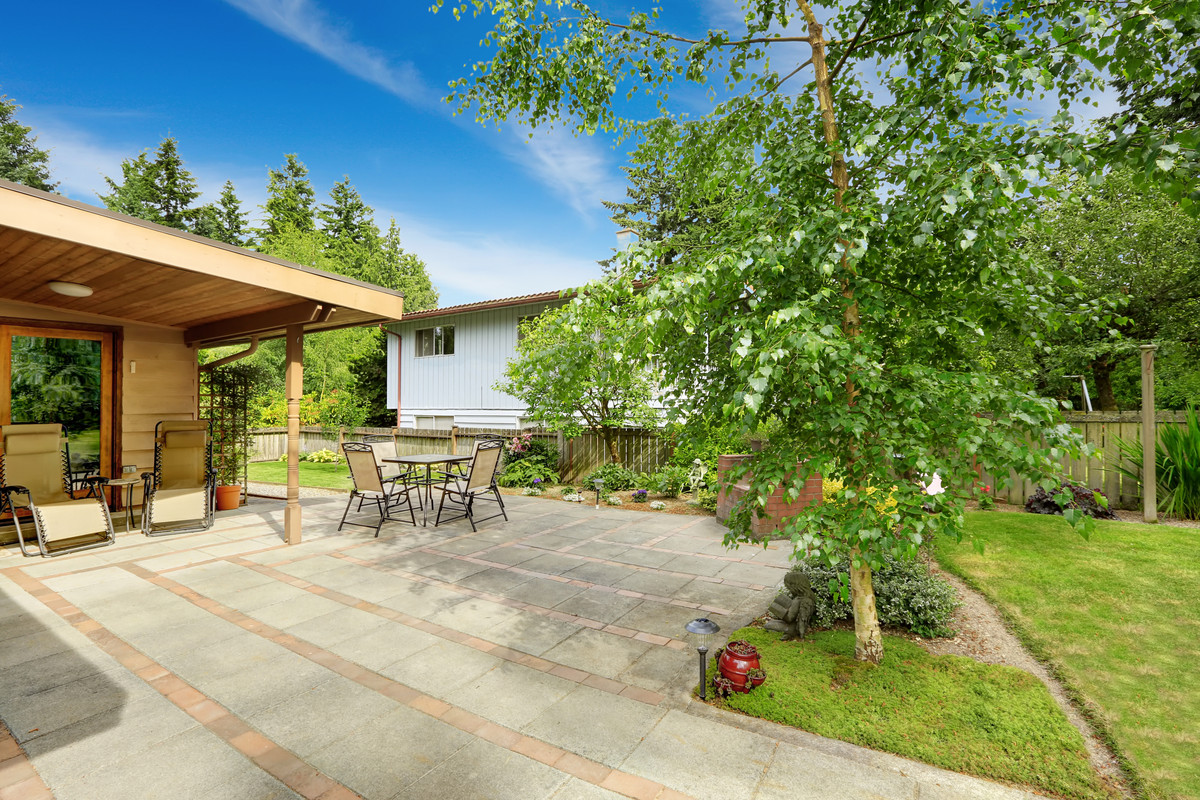Finishing a Concrete Patio
by siteadmin

There are several ways to finish a concrete patio. These include staining, leveling, and color options. In addition, you can install wire mesh reinforcement to prevent cracking. A good size for wire mesh reinforcement is a six-inch square of ten-gauge metal. This should be positioned in the middle of the slab thickness.
Staining
Staining concrete can be an excellent way to improve the curb appeal of your patio and protect it from the effects of outdoor elements. Staining concrete involves applying a water-based acrylic or acid stain to your patio's concrete. These stains will penetrate the slab's core and seal tiny pores on the surface to protect it from harsh elements. Stained concrete is more resistant to water damage and fading, so it will last for years with minimal maintenance.
First, you must let the concrete dry completely before applying the stain. Next, you must spread the stain over the surface using a paintbrush or tarp. Start by applying stain around the perimeter, paying particular attention to the seams. Then, use a paint pad to cover the surface and stay within a single section. If possible, try feathering the edges with the paint to prevent them from being too coarse.
Leveling
If your patio has settled, you may consider leveling it by adding a layer of polyurethane foam to the bottom. The polyurethane foam is injected through tiny holes in the slab and expands as it cures, lifting the patio back to its original level. This repair method is highly effective and involves less demolition than other types of repair.
If you notice an uneven concrete patio, you should fix it as soon as possible. Whether your slab is slightly uneven or has been shifted by heavy traffic, the correct leveling method will allow you to enjoy your patio for longer. The first step in releveling a patio is to clean and grind away the top layer of concrete.
Color options
Choosing a color for your concrete patio is a great way to add a personal touch to your outdoor living space. It will make your home feel more welcoming, and you can choose various colors to match your taste. For example, if your house is traditional in appearance, you might prefer a light, sandy color that will complement your home's exterior. Alternatively, consider using brown-colored concrete if you want a warm, earthy look. Brown concrete is available in many shades, from light to dark, and can match your home's natural wood tone.
You can also add a border if you want a more dramatic look. A border made of stone or tile will add a beautiful accent to your concrete patio. You can also paint the border in a color different from the center, if you wish.
Slopes
When you build a concrete patio, you must consider the slopes you may encounter. A concrete patio that is not sloped will have difficulty draining water. It may also be difficult to move around on. Fortunately, there are several techniques for correcting this problem. Here are a few.
First, you must calculate the slope of the patio. This is usually calculated by measuring the patio length from the building to the end of the patio. Then you multiply the measurement by 1/4 to determine the elevation difference. For example, a 20-foot patio should have a slope of five inches.
Requirements
When planning a concrete patio, you have many considerations to make. For example, the strength of the concrete is very important. It affects how long the patio will last. It also impacts the surface area of the patio. High-strength concrete is recommended for patios that bear a large amount of weight. Use concrete with a PSI rating of five to six thousand for best results. You may also want to use rebar or reinforcing mesh to provide additional strength. These measures will also allow the patio to handle pressure differences from one corner to another.
The form you use for your concrete patio should be large enough to accommodate the patio slab you want to install. If you're putting the concrete slab directly on top of an existing concrete structure, make sure to use a form that can be lifted up during the pour. It's also important to ensure that the concrete is reinforced. To ensure that the concrete patio is strong, you should install a rebar in the base of the form. You should also purchase a wire mesh to reinforce the concrete. This will help prevent the slab from cracking.
Cost
Concrete can be molded and colored to create almost any design or pattern. The price of a concrete patio will vary depending on the type of concrete used, the size of the patio and the design. Depending on your preferences, you can get a basic design for $9 per square foot or get an elaborate design for around $350 per square foot.
One of the best options for a low-cost patio is exposed aggregate concrete. This type of concrete features aggregates that are made from natural stones, like granite and quartz. Other materials you can use for this patio include colored glass and basalts. Another popular option is engraved concrete, which is done with special tools and offers nearly unlimited design options. Engraved concrete costs between $11 and $13.5 per square foot.
There are several ways to finish a concrete patio. These include staining, leveling, and color options. In addition, you can install wire mesh reinforcement to prevent cracking. A good size for wire mesh reinforcement is a six-inch square of ten-gauge metal. This should be positioned in the middle of the slab thickness. Staining Staining concrete…
Recent Posts
- Roofing Company Savannah Sheds Light on the Lifespan of Roofs: How Long Should a Roof Last?
- Cost of Installing a Pool in Cape Coral, Florida: A Rough Guide
- Overland Park KS Painters Provides Insight: Essential Questions to Ask Your House Painter
- Is Stamped Concrete Cheaper than Regular Concrete? Debunking Myths with Columbus Stamp Concrete
- New Orleans Concreters Advocates for Stamped Concrete Driveways as the Ultimate Choice for Durability and Style
